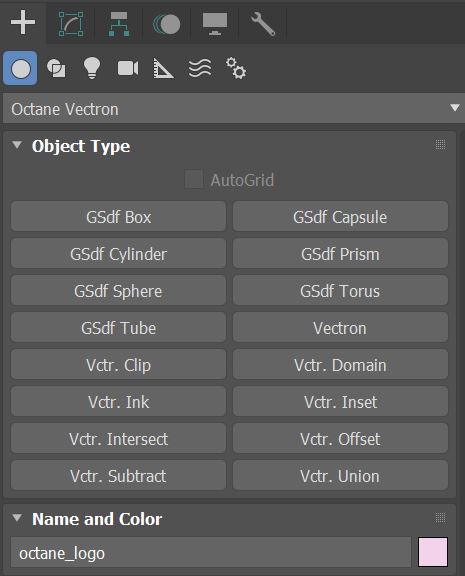
Vectron objects create geometry using the OSL language. Octane Vectron (Vector-Polygon) is a procedural primitive, providing infinite procedurally-generated scenes, Volumes, and geometry that bypass Meshes and Volumes.
Vectron has a zero-memory footprint, driving increased efficiencies when compared to Meshes or Volumes generated on CPUs. This enables Vectron to provide procedurally-generated scenes on the GPUThe GPU is responsible for displaying graphical elements on a computer display. The GPU plays a key role in the Octane rendering process as the CUDA cores are utilized during the rendering process. without using VRAM. Vectron provides tools in an artist’s workflow and helps render triangle-free geometry ny using OctaneRender's built-in OSL support and OSL texture shaders.
Procedural Primitives using OSL (Open Shader LanguageA shading language developed by Sony Pictures Imageworks. There are multiple render engines that utilize OSL as it is particularly suited for physically-based renderers.) vector geometry nodes let you create complex shapes, surfaces, Volumes, warps, operators, and effects. By vectorizing Meshes and Volumes into Vectron objects, you can manipulate Vectron nodes in revolutionary new ways. Examples include: spheres, strands, sound waves, infinite planes, liquids, clouds, oceans, flow field, and more.
Geometric Operators allow the Procedural OSL geometry node graphs workflow to follow the same structure as OSL texture node graphs with 4D mixing, blending, and boundary operator nodes for skinning, metaballs, and procedural resurfacing. Finally, boolean operations are also enabled in Octane Vectron.
Vectron objects are accessible from the Create tab in the Command panel under the Octane Vectron sub-category.

Figure 1: Accessing the Vectron object from the Command panel